2017
Type of resources
Available actions
Topics
INSPIRE themes
Keywords
Contact for the resource
Provided by
Years
Formats
Representation types
Update frequencies
status
Service types
Scale
Resolution
-
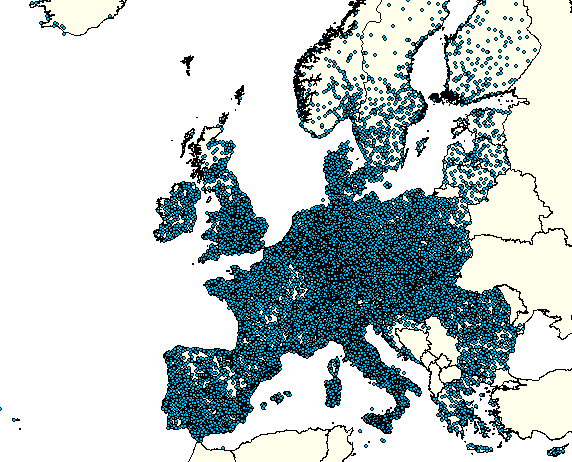
UWWTD Discharge Points, Nov. 2017 is one of the datasets produced within the frame of the reporting under 9th UWWTD Art.15 reporting period (UWWTD data call 2015). The Urban Waste Water Treatment Directive (UWWTD) (91/271/EEC) obliges Member States to report data on the implementation of the Directive upon request from the European Commission bi-annually. Reported data include receiving areas as designated under UWWTD, agglomerations, urban waste water treatment plants serving the agglomerations and points of discharges. Dataset UWWTD_DischargePoints contains information on individual points of discharge from urban waste water treatment plants or collecting systems, including their coordinates of discharge, link to specific treatment plant, type of receiving area into which the effluent / wastewater is discharged, related waterbody (or river basin), information on the discharge on land and potential reuse of the treated waste water. The discharge points layer is not used in UWWTD maps, therefore it is not included in any existing map service for the time being. The dataset is available only in tabular format through the EEA website.
-

The present dataset includes three buffer zones used to calculate statistics on Marine Protected Areas coverage in EU's marine waters. The three buffer zones layers correspond to "Near shore MSFD Region/Subregion boundary zone (0-1 nautical miles)", "Territorial MSFD Region/Subregion boundary zone (1-12 nautical miles)" and "Offshore MSFD Region/Subregion boundary zone (beyond 12 nautical miles to the edge of EU waters)". The dataset is based on the "Marine protected assessment areas" created in the context of the work published in the EEA Briefing No 13/2018 "Designed to conserve Europe's marine life, marine protected areas are a globally recognised tool for managing and enhancing our marine ecosystems", available on https://www.eea.europa.eu/publications/marine-protected-areas.
-

Reference layer of the catchments of sensitive areas, Nov. 2017 is one of the datasets produced within the frame of the reporting under 9th UWWTD Art.15 reporting period (UWWTD data call 2015). The Urban Waste Water Treatment Directive (UWWTD) (91/271/EEC) obliges Member States to report data on the implementation of the Directive upon request from the European Commission bi-annually. Reported data include receiving areas as designated under UWWTD, agglomerations, urban waste water treatment plants serving the agglomerations and points of discharges. Receiving area is the area receiving discharges of waste water from agglomerations. SA_catchment: the layer displays catchments of sensitive areas designated by Member States as sensitive.
-

EuroBoundaryMap provides a European geographic database for administrative and statistical regions that will be maintained at the source level by the National Mapping and Cadastral Agencies (NMCAs), and by providing harmonized access conditions for this geographic information within the framework of EuroGeographics. EBM (1:100000) offers the combined strength of detailed European administrative units and linkages to the corresponding LAU and NUTS codes. This metadata refers to the version 12 of EBM, which is a full update of all the countries. For more information about the data product specifications and changes with respect to the previous version of this dataset (EBM v11), please refer to the documents EBM_v12_Specification.pdf, EBM_v12_TechnicalGuide.pdf and EBM_v12_Changes.pdf provided with the dataset (Documents.zip) This dataset is only to be used internally in the EEA, for the purposes and under the conditions stated under the "Resource Constraints" elements of this metadata file and on the document "LicenseConditions.pdf" provided with this dataset. This metadata has been slightly adapted from the original metadata file provided by EuroGeographics and is to be used only for internal EEA purposes. For reference, the metadata file created by EuroGeographics is provided together with the dataset ("Metadata_EBM_v12.xml" within the "Descriptions_Metadata.zip")
-
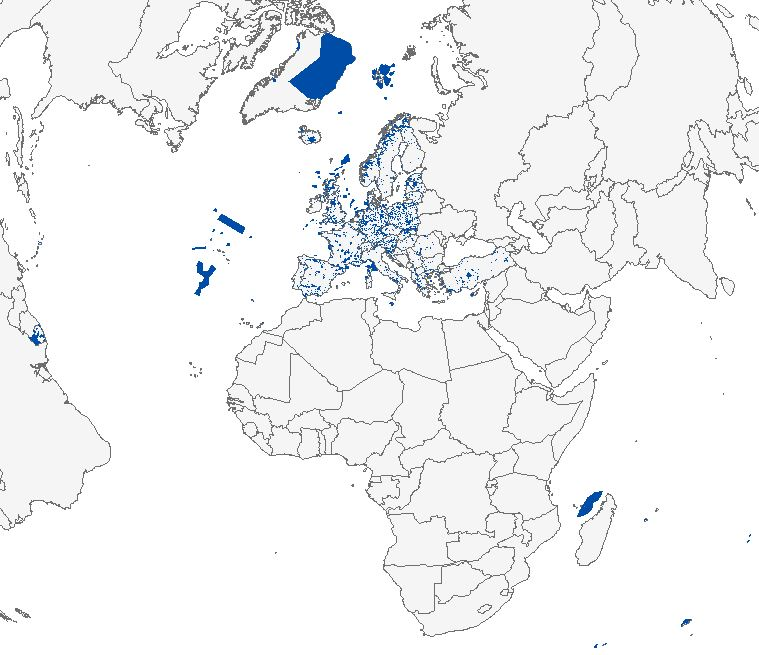
The Common Database on Designated Areas (CDDA) is more commonly known as Nationally designated areas. It is the official source of protected area information from European countries to the World Database of Protected Areas (WDPA). The inventory began in 1995 under the CORINE programme of the European Commission. It is now one of the agreed Eionet priority data flows maintained by EEA with support from the European Topic Centre on Biological Diversity. The CDDA data can be queried online in the European Nature Information System (EUNIS). Geographical coverage of GIS vector boundary data: Albania, Austria, Belgium, Bosnia and Herzegovina, Bulgaria, Croatia, Cyprus, Czech Republic, Denmark, Estonia, Finland, France, Germany, Greece, Hungary, Iceland, Ireland, Italy, Kosovo under UNSC Resolution 1244/99, Latvia, Liechtenstein, Lithuania, Luxembourg, the North Macedonia, Malta, Montenegro, the Netherlands, Norway, Poland, Portugal, Romania, Serbia, Slovakia, Slovenia, Spain, Sweden, Switzerland and United Kingdom. EEA does not have permission to distribute some or all sites reported by Estonia, Ireland, Romania and Turkey. When re-using the data, copyright is to be mentioned specifically for Estonia and for Finland: "Estonian Environmental Register 01.01.2017; "©Finnish Environment Institute, 2017".
-

The Common Database on Designated Areas (CDDA) is more commonly known as Nationally designated areas. It is the official source of protected area information from European countries to the World Database of Protected Areas (WDPA). The inventory began in 1995 under the CORINE programme of the European Commission. It is now one of the agreed Eionet priority data flows maintained by EEA with support from the European Topic Centre on Biological Diversity. The CDDA data can be queried online in the European Nature Information System (EUNIS). Geographical coverage of GIS vector boundary data: Albania, Austria, Belgium, Bosnia and Herzegovina, Bulgaria, Croatia, Cyprus, Czech Republic, Denmark, Estonia, Finland, France, Germany, Greece, Hungary, Iceland, Ireland, Italy, Kosovo under UNSC Resolution 1244/99, Latvia, Liechtenstein, Lithuania, Luxembourg, the North Macedonia, Malta, Montenegro, the Netherlands, Norway, Poland, Portugal, Romania, Serbia, Slovakia, Slovenia, Spain, Sweden, Switzerland and United Kingdom. EEA does not have permission to distribute some or all sites reported by Estonia, Ireland, Romania and Turkey. When re-using the data, copyright is to be mentioned specifically for Estonia and for Finland: "Estonian Environmental Register 01.01.2017; "©Finnish Environment Institute, 2017".
-
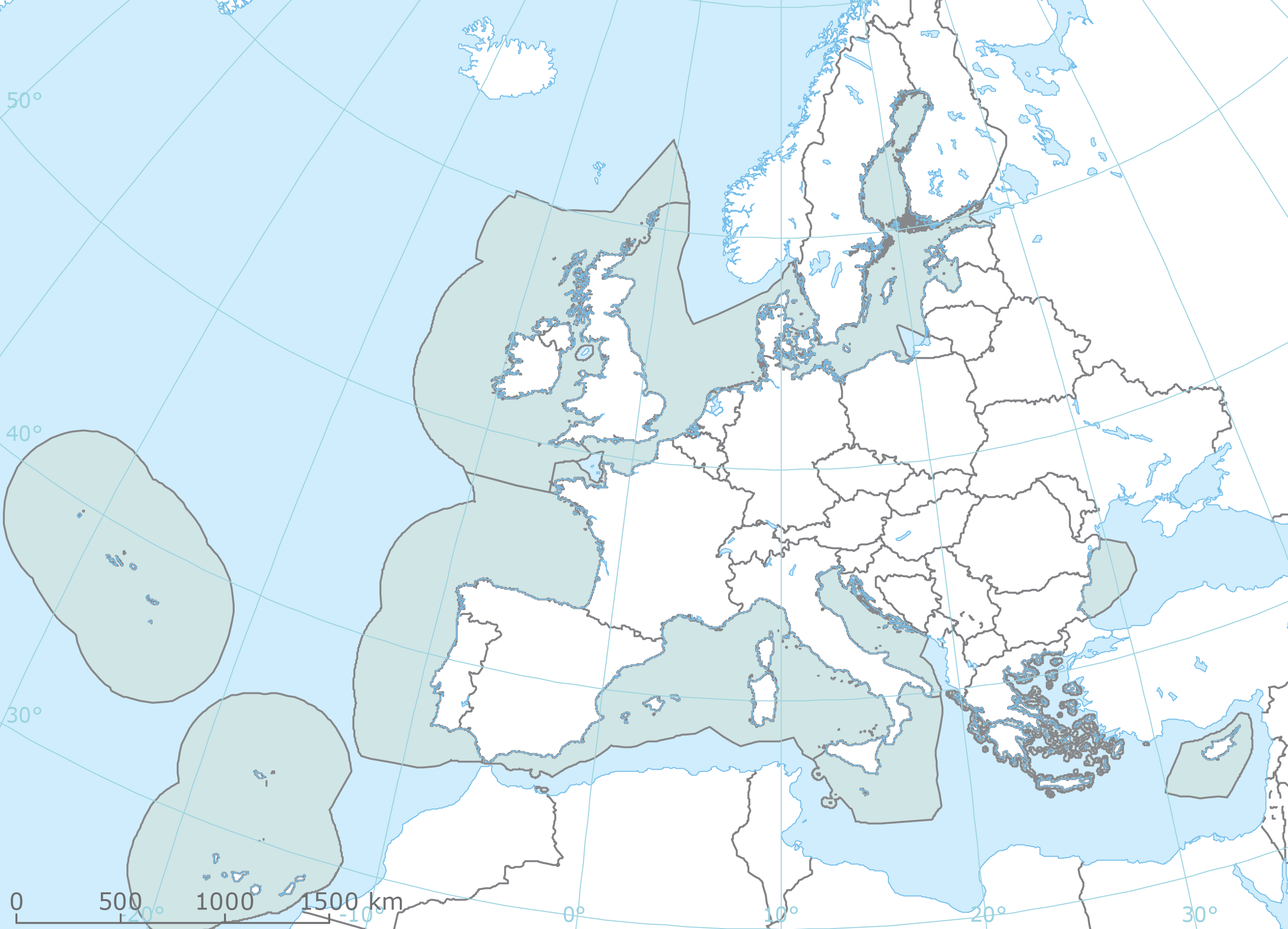
The spatial extent of the MPA assessment areas was defined as the marine waters surrounding the EU countries whose outer limit is defined by the 200 NM boundary from the coast (possibly coinciding with formally recognised EEZ boundaries) or the equidistance (in cases of opposite neighbouring EU countries), or by the presence of a boundary defined by an agreed treaty. Given no formal boundary of this map exists and since this limit coincides with the boundary of the maritime area (water column) submitted by EU Member States under MSFD, this dataset was based on a MSFD Region/Subregion boundary shapefile assembled in 2013 by ETC/ICM integrated with the Maritime Boundaries (version 7) from the Flanders Marine Institute (VLIZ). This dataset has been used to create the map that shows the percentage marine protected area (MPA) coverage in Europe's regional seas and also the distance to the Convention on Biological Diversity Aichi target 11.
-
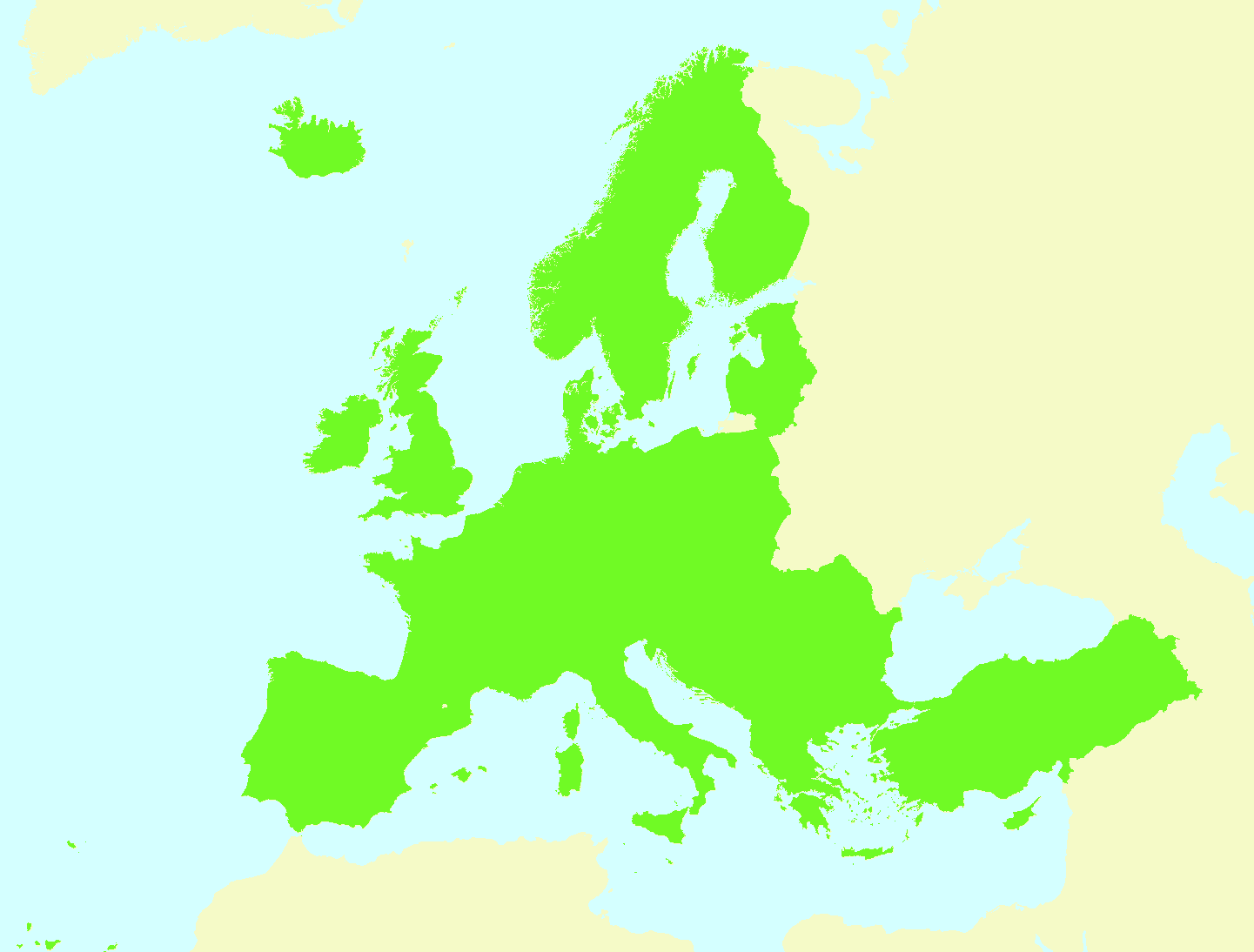
The CLC2012 land mask is a dataset derived from CLC2012 intended to be used as a reference dataset for data harmonisation within the EEA. It is a mask where all pixels with any valid land cover class value in CLC2012, except for class 523 - Sea and ocean, get a value of "1". The rest of pixels get a "0". In other words, land areas with CLC2012 data are identified with the value "1", whereas sea areas and areas with no CLC2012 data available get a value of "0".
-

CORINE Land Cover (CLC) data are produced from 1986 for European countries. Altogether four mapping inventories were implemented in this period, producing four status layers (CLC1990, CLC2000, CLC2006, CLC2012) and three CLC-change (CLCC) layers for three periods (1990-2000, 2000-2006, 2006-2012). To eliminate several inconsistencies from the usage of 100m raster version of original CLC data in the accounting systems at EEA, like Land and Ecosystem Accounting (LEAC), which uses a 1km grid (CUBE) base for calculation, a harmonization method were elaborated for the CLC and CLCC data. The applied solution for the harmonization combines CLC status and change layers in the 100m raster form in order to create homogeneous quality time series of CLC / CLC-change layers for accounting purposes. The so called "CLC accounting layers" fulfilling the relation: CLC-change = Modified CLC_ new status – Modified CLC old status. The modification method maximizes compatibility of “backdated” CLC status layers with CLC2012 and each other. However this simple solution causes several issues to be solved: (1) Modified CLC layers loose statistical comparability with original CLC layers, because of increased geometry; smaller than 25ha MMU features will appear locally where changes appear. In case of some CLC classes this causes significant differences. (2) “Fake features” are appearing in the backdated CLC status layers due to inconsistencies between CLC-change datasets. CLC2000 was the second CORINE Land Cover inventory and lasted for four years. Results of CLC1990 were improved and mapping CLC-Changes were tested. Computer Assisted Photo-Interpretation (CAPI) has become a commonplace. Number of participants has increased. CLC2000 was replaced by CLC2000_revised, if the country has produced this during the implementation of CLC2006 and delivered to EEA. If the CLC2000_revised layer did not exist for the country, the original CLC2000 was used in the final European mosaic.
-
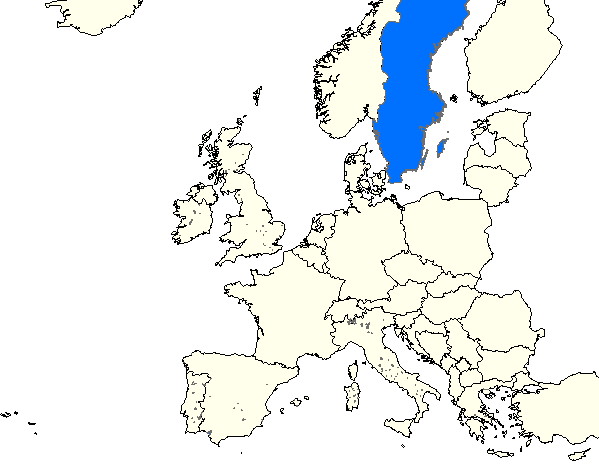
Reference layer of the lakes sensitive areas, Nov. 2017 is one of the datasets produced within the frame of the reporting under 9th UWWTD Art.15 reporting period (UWWTD data call 2015). The Urban Waste Water Treatment Directive (UWWTD) (91/271/EEC) obliges Member States to report data on the implementation of the Directive upon request from the European Commission bi-annually. Reported data include receiving areas as designated under UWWTD, agglomerations, urban waste water treatment plants serving the agglomerations and points of discharges. Receiving area is the area receiving discharges of waste water from agglomerations. SA_lake: the layer displays lakes designated by Member States as sensitive.
 RUC Geo-Data catalogue
RUC Geo-Data catalogue